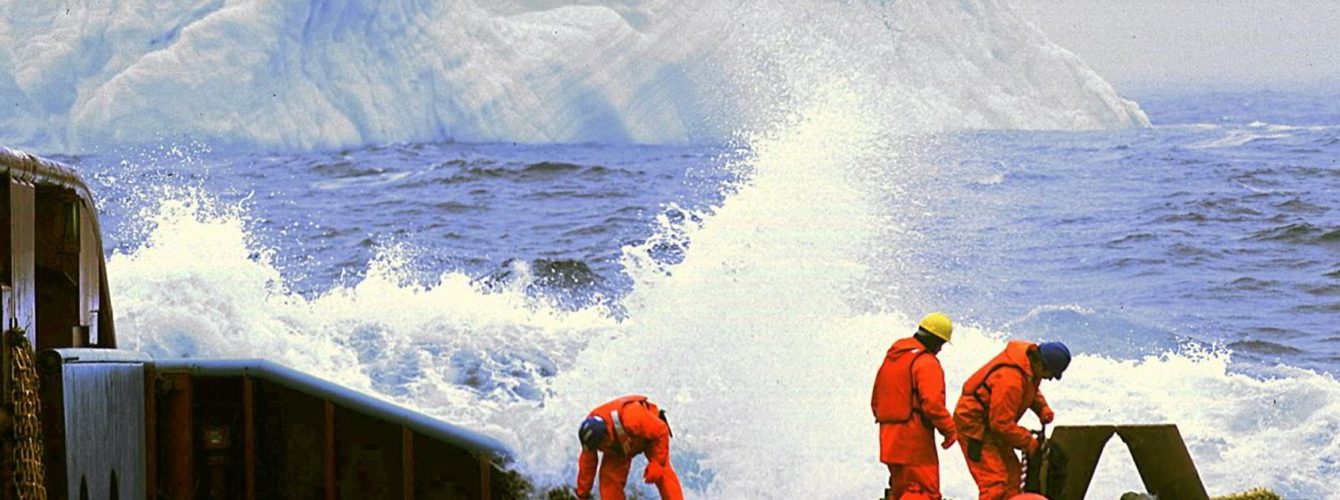Intecsea study says no showstoppers to floating wind arrays off Newfoundland & Labrador — but icebergs, sea ice and cold climate pose challenges
Icebergs, sea ice and sub-zero temperatures are the key challenges to overcome before floating wind turbines can be safely deployed off Newfoundland & Labrador (N&L), Canada to provide power to oil and gas facilities, according to a study by Intecsea, a subsidiary of Australian engineering giant Worley.
Despite these challenges, Mike Paulin, Intecsea’s Canada operations director, said the study shows “offshore wind power electrification of a brownfield or greenfield (oil and gas) facility is a technically feasible concept for N&L”.
However, he pointed out further work is needed on how best to connect power lines to floating production, storage and offloading vessels, how floating wind turbines would avoid iceberg impacts and how they would deal with sea ice and super-structure icing.
Intecsea undertook a study on powering ExxonMobil’s Hebron gravity-based platform by floating wind, while three other studies focused on theoretical floating-wind-to-FSPO solutions on Navitas Petroleum’s Block 1147 in the Orphan basin.
Due on stream in 2022, Equinor’s Hywind Tampen project off Norway will be the world’s first floating wind scheme to electrify oil and gas facilities — the oil company’s Snorre and Gullfaks platforms.
Iceberg threat
Intecsea’s work built on the findings of Hywind, plus pilot floating wind schemes off Scotland, Portugal and France as well as an offshore wind facility in Finland that is the only one operating in ice conditions.
Over the last 25 years, oil companies in N&L have learnt to deal with cold-climate issues and the same engineering and risk philosophies can be used should inform the design of offshore wind facilities in the province.
Massive concrete platforms — at N&L’s producing Hibernia and Hebron oilfields — can withstand iceberg impact, while FPSOs can disconnect from their subsea hardware to flee approaching icebergs.
In addition, platform support vessels have been equipped and their personnel trained to tow icebergs from the vicinity of platforms.
Icy waters
Sea ice a few metres thick is less of an issue, but hulls and sub-structures must still be able to handle pressures exerted, particularly by thicker ice ridges.
Sub-zero temperatures can result in icing forming on a platform’s topsides, which can be danger for an FPSO because the extra weight can change a vessel’s centre of gravity and influence stability.
Discussing iceberg issues, Paulin told delegates at a recent N&L Oil & Gas Industries event, that to make a floating wind facility rapidly disconnectable off N&L would “significantly” increase costs, so specific studies would be needed to establish if this would be an essential requirement.
However, he said concepts have been designed for eastern Canada that can withstand iceberg loads and/or be disconnected and towed away. But proof of concept is needed.
Disconnecting FPSOs
More work is needed on safely connecting power lines to FPSO swivels, which allow vessels to weathervane in varying wind and sea conditions and host the flowlines carrying oil and gas from subsea infrastructure.
In addition, further studies need to be done on how offshore power cables avoid being damaged by iceberg scouring and how they can withstand dynamic loading created by sea conditions.
Other questions posed are whether increased turbine spacing reduces iceberg-impact risk and improves disconnectability; how existing FPSOs can be modified to handle power-from-wind; plus the need to develop a de-icing system for wind turbine blades.
Paulin also pointed out that transformer substations at the wind farm will need to deal with the province’s icy conditions and could be fixed or floating solutions.
He added that a cheaper option could be to install substations on the seabed in excavated “glory holes” to protect them from iceberg impact and this idea builds on work successfully undertaken by the oil and gas sector in recent years.
Lessons from Hebron
Intecsea’s Hebron study established it is technically feasible for a floating wind farm sited 15 kilometres from the facility to meet 45% of its 90 megawatt power needs using 13 turbines each with a capacity of 8MW.
These turbines — spaced 1.2 kilometres apart in about 75 metres of water — would reduce greenhouse gas emissions by about 140,000 tonnes annually.
The estimated cost of this project would be about C$690 million (US$522 million), according to Intecsea, with annual operating costs of C$18 million.
One Navitas study proposed meeting 45% of the 65 MW power needs of a single FPSO via nine, 8MW turbines moored in 1200 meres of water, some 15 kilometres away and with 3.3-kilometre spacing.
The second study focused on two FPSO with a total power requirement of 110 MW and meeting 50% of this demand from 16 turbines each with a capacity of 8 MW. Other characteristics of the wind farm were the same as for the single FPSO option.
Intecsea’s final study looked at nine 8 MW turbines (and a subsea transformer) located in 300 metres of water about 65 kilometres from a 65 MW capacity FPSO and meeting 45% of this demand.
This estimated costs of these three floating wind array solutions, according to Intecsea, were about C$516 million, C$893 million and C$570 million, respectively, with operating costs of C$12 million, C$22 million and C$12 million.
The single FPSO examples saw greenhouse gas emissions fall by almost 100,000 tonnes annually, while the double-FPSO study resulted in emissions plunging by 190,000 tonnes.
—
Source: Upstream | This text was excerpted from the media outlet cited on November 27, 2020 and is provided to Noia members for information purposes only. Any opinion expressed therein is neither attributable to nor endorsed by Noia.






